Static and Fatigue Tests on Cementitious Cantilever Beams Using Nanoindenter
Abstract
1. Introduction
2. Materials and Methods
2.1. Materials and Sample Preparation
2.2. Static Bending Tests
2.3. Fatigue Bending Tests
3. Results and Discussions
3.1. Static Bending Tests
3.2. Fatigue Bending Tests
3.2.1. Load-Displacement Curve
3.2.2. Growth Rate of Residual Displacement
3.2.3. Residual Mechanical Properties
4. Conclusions
Author Contributions
Funding
Acknowledgments
Conflicts of Interest
References
- Mehta, P.K.; Monteiro, P.J.M. Concrete: Microstructure, Properties, and Mater; McGraw-Hill Education: Berkshire, UK, 2006; ISBN 0071589198. [Google Scholar]
- Van Mier, J.G.M. Concrete Fracture; Taylor & Francis: New York, NY, USA, 2012; ISBN 978-1-4665-5470-2. [Google Scholar]
- Qian, Z. Multiscale Modeling of Fracture Processes in Cementitious Materials. Ph.D. Thesis, Delft University of Technology, Delft, The Netherlands, 2012. [Google Scholar]
- Constantinides, G.; Ulm, F.J. The effect of two types of C-S-H on the elasticity of cement-based materials: Results from nanoindentation and micromechanical modeling. Cem. Concr. Res. 2004, 34, 67–80. [Google Scholar] [CrossRef]
- Hu, C.; Li, Z. A review on the mechanical properties of cement-based materials measured by nanoindentation. Constr. Build. Mater. 2015, 90, 80–90. [Google Scholar] [CrossRef]
- Luo, Z.; Li, W.; Wang, K.; Shah, S.P. Research progress in advanced nanomechanical characterization of cement-based materials. Cem. Concr. Compos. 2018, 94, 277–295. [Google Scholar] [CrossRef]
- Hu, C.; Li, Z. Micromechanical investigation of Portland cement paste. Constr. Build. Mater. 2014, 71, 44–52. [Google Scholar] [CrossRef]
- Chen, S.J.; Duan, W.H.; Li, Z.J.; Sui, T.B. New approach for characterisation of mechanical properties of cement paste at micrometre scale. Mater. Des. 2015, 87, 992–995. [Google Scholar] [CrossRef]
- Němeček, J.; Králík, V.; Šmilauer, V.; Polívka, L.; Jäger, A. Tensile strength of hydrated cement paste phases assessed by micro-bending tests and nanoindentation. Cem. Concr. Compos. 2016, 73, 164–173. [Google Scholar] [CrossRef]
- Luković, M.; Schlangen, E.; Ye, G. Combined experimental and numerical study of fracture behaviour of cement paste at the microlevel. Cem. Concr. Res. 2015, 73, 123–135. [Google Scholar] [CrossRef]
- Schlangen, E.; Lukovic, M.; Šavija, B.; Copuroglu, O. Nano-Indentation Testing and Modelling of Cement Paste. In Concreep 10; ASCE Library: New York, NY, USA, 2015; pp. 1028–1031. [Google Scholar] [CrossRef]
- Zhang, H.; Šavija, B.; Figueiredo, S.C.; Lukovic, M.; Schlangen, E. Microscale testing and modelling of cement paste as basis for multi-scale modelling. Materials 2016, 9, 907. [Google Scholar] [CrossRef] [PubMed]
- Zhang, H.; Šavija, B.; Schlangen, E. Combined experimental and numerical study on micro-cube indentation splitting test of cement paste. Eng. Fract. Mech. 2018, 199, 773–786. [Google Scholar] [CrossRef]
- Zhang, H.; Šavija, B.; Figueiredo, S.C.; Schlangen, E. Experimentally validated multi-scale modelling scheme of deformation and fracture of cement paste. Cem. Concr. Res. 2017, 102, 175–186. [Google Scholar] [CrossRef]
- Liu, D.; Flewitt, P.E.J. Deformation and fracture of carbonaceous materials using in situ micro-mechanical testing. Carbon 2017, 114, 261–274. [Google Scholar] [CrossRef]
- Šavija, B.; Liu, D.; Smith, G.; Hallam, K.R.; Schlangen, E.; Flewitt, P.E.J. Experimentally informed multi-scale modelling of mechanical properties of quasi-brittle nuclear graphite. Eng. Fract. Mech. 2016, 153, 360–377. [Google Scholar] [CrossRef]
- Lee, M.K.; Barr, B.I.G. An overview of the fatigue behaviour of plain and fibre reinforced concrete. Cem. Concr. Compos. 2004, 26, 299–305. [Google Scholar] [CrossRef]
- Gao, L.; Hsu, C.T.T. Fatigue of concrete under uniaxial compression cyclic loading. ACI Mater. J. 1998, 95, 575–581. [Google Scholar]
- Jiang, L.; Li, C.; Zhu, C.; Song, Z.; Chu, H. The effect of tensile fatigue on chloride ion diffusion in concrete. Constr. Build. Mater. 2017, 151, 119–126. [Google Scholar] [CrossRef]
- Desmettre, C.; Charron, J.P. Water permeability of reinforced concrete subjected to cyclic tensile loading. ACI Mater. J. 2013, 110, 79–88. [Google Scholar] [CrossRef]
- Van Breugel, K.; Koleva, D.; van Beek, T. The Ageing of Materials and Structures: Towards Scientific Solutions for the Ageing of Our Assets; Springer: New York, NY, USA, 2017; ISBN 9783319701943. [Google Scholar]
- Hordijk, D. Local Approach to Fatigue of Concrete. Ph.D. Thesis, Delft University of Technology, Delft, The Netherlands, 1991. [Google Scholar]
- Hsu, T.T.C. Fatigue and microcracking of concrete. Matér. Constr. 1984, 17, 51–54. [Google Scholar] [CrossRef]
- Horii, H.; Shin, H.C.; Pallewatta, T.M. Mechanism of fatigue crack growth in concrete. Cem. Concr. Compos. 1992, 14, 83–89. [Google Scholar] [CrossRef]
- Bažant, Z.P.; Xu, K. Size Effect in Fatigue Fracture of Concrete. ACI Mater. J. 1991, 88, 390–399. [Google Scholar]
- Simon, K.M.; Chandra Kishen, J.M. A multiscale approach for modeling fatigue crack growth in concrete. Int. J. Fatigue 2017, 98, 1–13. [Google Scholar] [CrossRef]
- Guo, L.P.; Carpinteri, A.; Roncella, R.; Spagnoli, A.; Sun, W.; Vantadori, S. Fatigue damage of high performance concrete through a 2D mesoscopic lattice model. Comput. Mater. Sci. 2009, 44, 1098–1106. [Google Scholar] [CrossRef]
- Guo, L.P.; Carpinteri, A.; Spagnoli, A.; Sun, W. Experimental and numerical investigations on fatigue damage propagation and life prediction of high-performance concrete containing reactive mineral admixtures. Int. J. Fatigue 2010, 32, 227–237. [Google Scholar] [CrossRef]
- Zhang, J.; Scherer, G.W. Comparison of methods for arresting hydration of cement. Cem. Concr. Res. 2011, 41, 1024–1036. [Google Scholar] [CrossRef]
- Oliver, W.C.; Pharr, G.M. An improved technique for determining hardness and elastic modulus (Young’s modulus). J. Mater. Res. 1992, 7, 1564–1583. [Google Scholar] [CrossRef]
- Li, X.; Bhushan, B. A review of nanoindentation continuous stiffness measurement technique and its applications. Mater. Charact. 2002, 48, 11–36. [Google Scholar] [CrossRef]
- Bouzakis, K.D.; Michailidis, N.; Hadjiyiannis, S.; Skordaris, G.; Erkens, G. The effect of specimen roughness and indenter tip geometry on the determination accuracy of thin hard coatings stress-strain laws by nanoindentation. Mater. Charact. 2002, 49, 149–156. [Google Scholar] [CrossRef]
- Fischer-Cripps, A.C. Factors Affecting Nanoindentation Test Data; Springer: New York, NY, USA, 2000; ISBN 978-0-387-98914-3. [Google Scholar]
- Poelma, R.H.; Morana, B.; Vollebregt, S.; Schlangen, E.; Van Zeijl, H.W.; Fan, X.; Zhang, G.Q. Tailoring the mechanical properties of high-aspect-ratio carbon nanotube arrays using amorphous silicon carbide coatings. Adv. Funct. Mater. 2014, 24, 5737–5744. [Google Scholar] [CrossRef]
- Timoshenko, S. Strength of Materials (Part I), 3rd ed.; D. Van Nostrand Co., Inc.: New York, NY, USA, 1958. [Google Scholar]
- Stephens, L.S.; Kelly, K.W.; Simhadri, S.; McCandless, A.B.; Meletis, E.I. Mechanical property evaluation and failure analysis of cantilevered LIGA nickel microposts. J. Microelectromech. Syst. 2001, 10, 347–359. [Google Scholar] [CrossRef]
- Patel, R.; Dubey, S.K.; Pathak, K.K. Effect of depth span ratio on the behaviour of beams. Int. J. Adv. Struct. Eng. 2014, 6, 3. [Google Scholar] [CrossRef]
- Hutchinson, J.R. Shear Coefficients for Timoshenko Beam Theory. J. Appl. Mech. 2001, 68, 87–92. [Google Scholar] [CrossRef]
- Stephen, N.G. Stephen2002—On a check on the accuracy of Timoshenko’s beam theory.pdf. J. Sound Vib. 2002, 257, 809–812. [Google Scholar] [CrossRef]
- Cowper, G.R. The Shear Coefficient in Timoshenko’s Beam Theory. J. Appl. Mech. 1966, 33, 335–340. [Google Scholar] [CrossRef]
- Bažant, Z.; Planas, J. Fracture and Size Effect in Concrete and Other Quasibrittle Materiales; CRC Press: Boca Raton, FL, USA, 1998; Volume 16, ISBN 084938284X. [Google Scholar]
- Bažant, Z.P. Size Effect in Blunt Fracture: Concrete, Rock, Metal. J. Eng. Mech. 1984, 110, 518–535. [Google Scholar] [CrossRef]
- Zhang, H.; Šavija, B.; Xu, Y.; Schlangen, E. Size effect on splitting strength of hardened cement paste: Experimental and numerical study. Cem. Concr. Compos. 2018, 94, 264–276. [Google Scholar] [CrossRef]
- Zhang, B. Relationship between pore structure and mechanical properties of ordinary concrete under bending fatigue. Cem. Concr. Res. 1998, 28, 699–711. [Google Scholar] [CrossRef]
- Thun, H.; Ohlsson, U.; Elfgren, L. Tensile fatigue capacity of concrete. Nord. Concr. Res. 2007, 36, 48–64. [Google Scholar]
- Vicente, M.A.; González, D.C.; Mínguez, J.; Tarifa, M.A.; Ruiz, G.; Hindi, R. Influence of the pore morphology of high strength concrete on its fatigue life. Int. J. Fatigue 2018, 112, 106–116. [Google Scholar] [CrossRef]
- Simon, K.M.; Kishen, J.M.C. Influence of aggregate bridging on the fatigue behavior of concrete. Int. J. Fatigue 2016, 90, 200–209. [Google Scholar] [CrossRef]
- Holmen, J.O. Fatigue of Concrete by Constant and Variable Amplitude Loading. ACI Spec. Publ. 1982, 75, 71–110. [Google Scholar] [CrossRef]
- Malek, A.; Scott, A.; Pampanin, S.; MacRae, G.; Marx, S. Residual Capacity and Permeability-Based Damage Assessment of Concrete under Low-Cycle Fatigue. J. Mater. Civ. Eng. 2018, 30, 4018081. [Google Scholar] [CrossRef]
- Xu, B.X.; Yue, Z.F.; Wang, J. Indentation fatigue behaviour of polycrystalline copper. Mech. Mater. 2007, 39, 1066–1080. [Google Scholar] [CrossRef]
- Saito, M. Characteristics of microcracking in concrete under static and repeated tensile loading. Cem. Concr. Res. 1987, 17, 211–218. [Google Scholar] [CrossRef]
- Zhang, H.; Šavija, B.; Schlangen, E. Towards understanding stochastic fracture performance of cement paste at micro length scale based on numerical simulation. Constr. Build. Mater. 2018, 183, 189–201. [Google Scholar] [CrossRef]
- Van Breugel, K. Simulation of Hydration and Formation of Structure in Hardening Cement-Based Materials. Ph.D. Thesis, Delft University of Technology, Delft, The Netherlands, 1991. [Google Scholar]
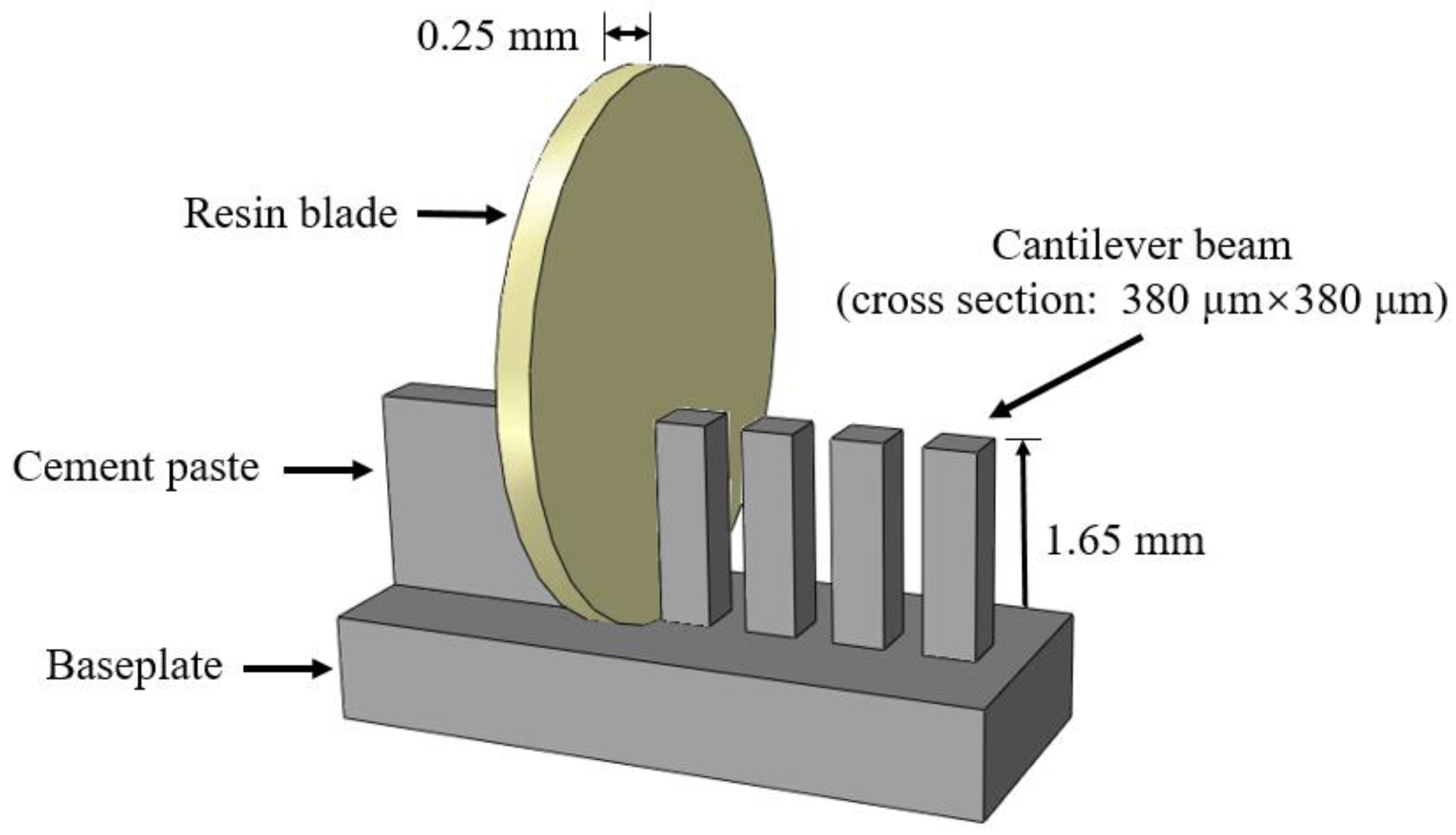
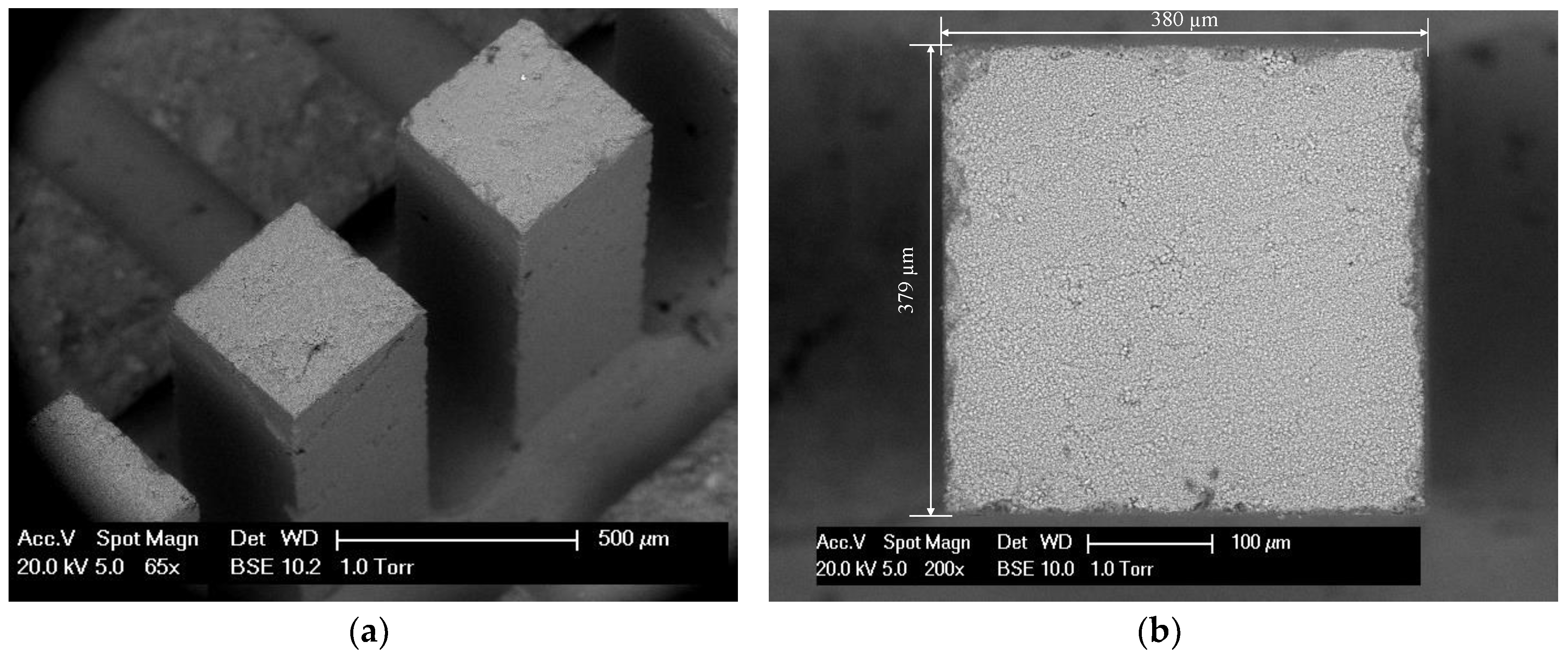
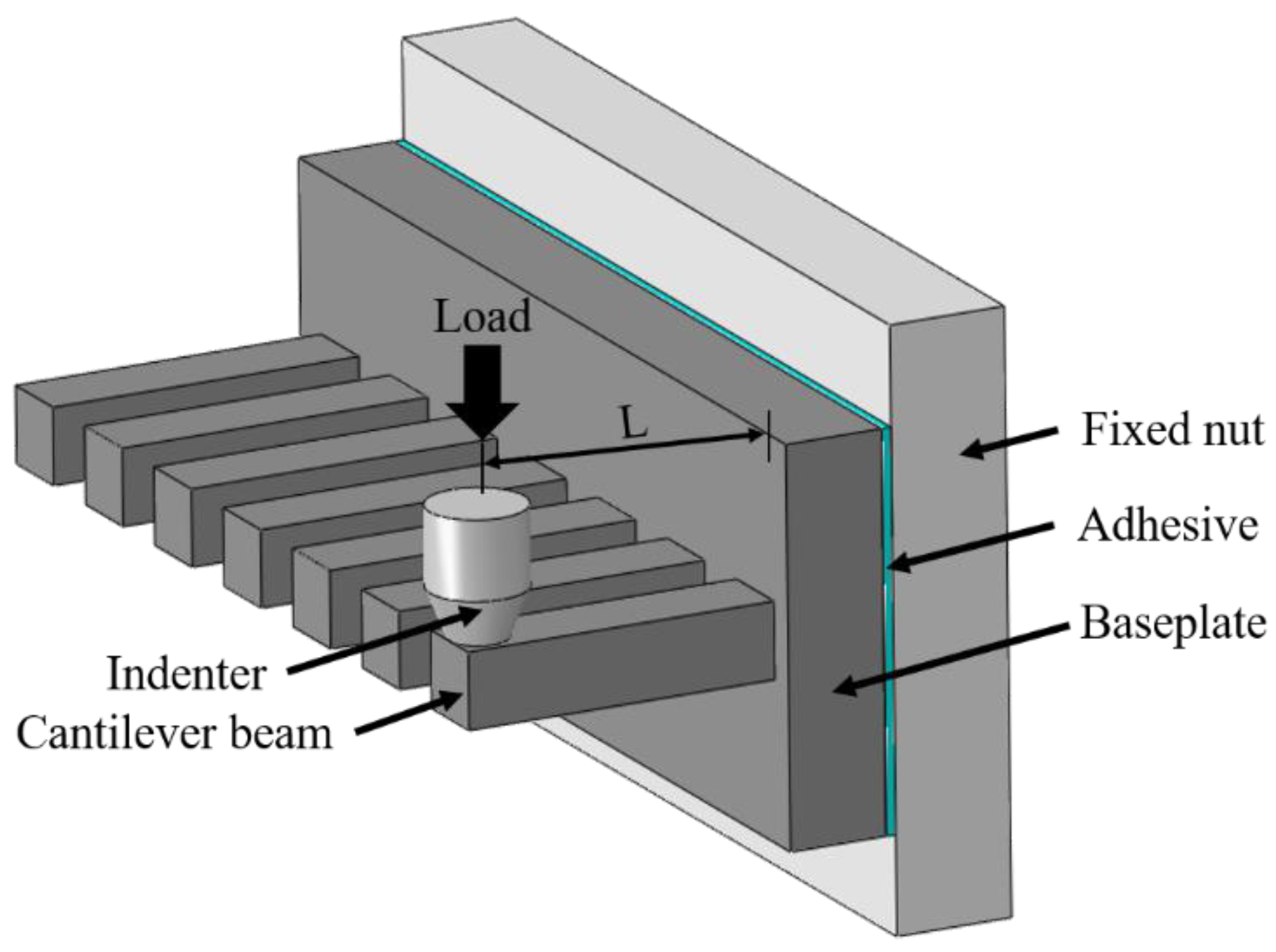
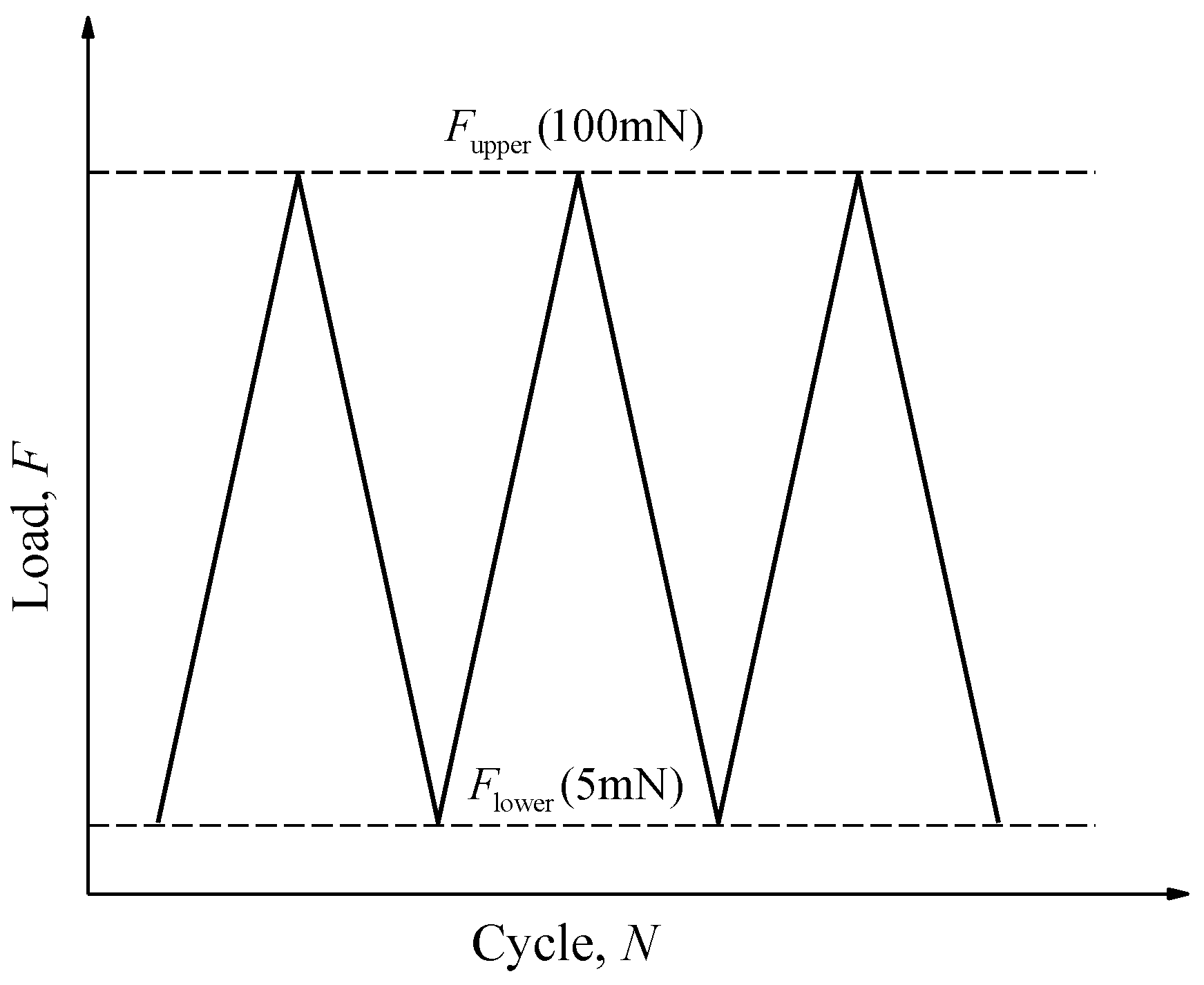
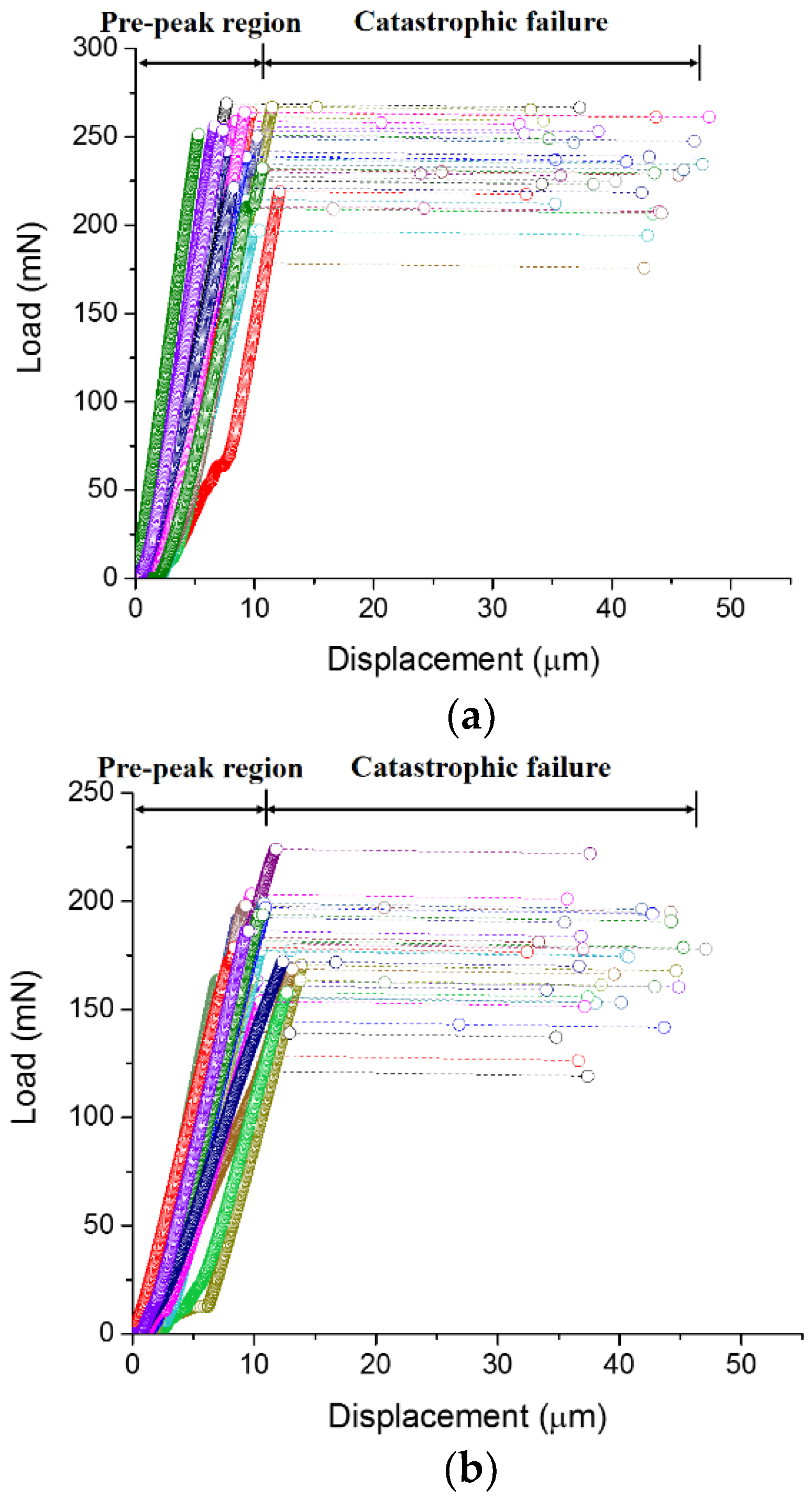
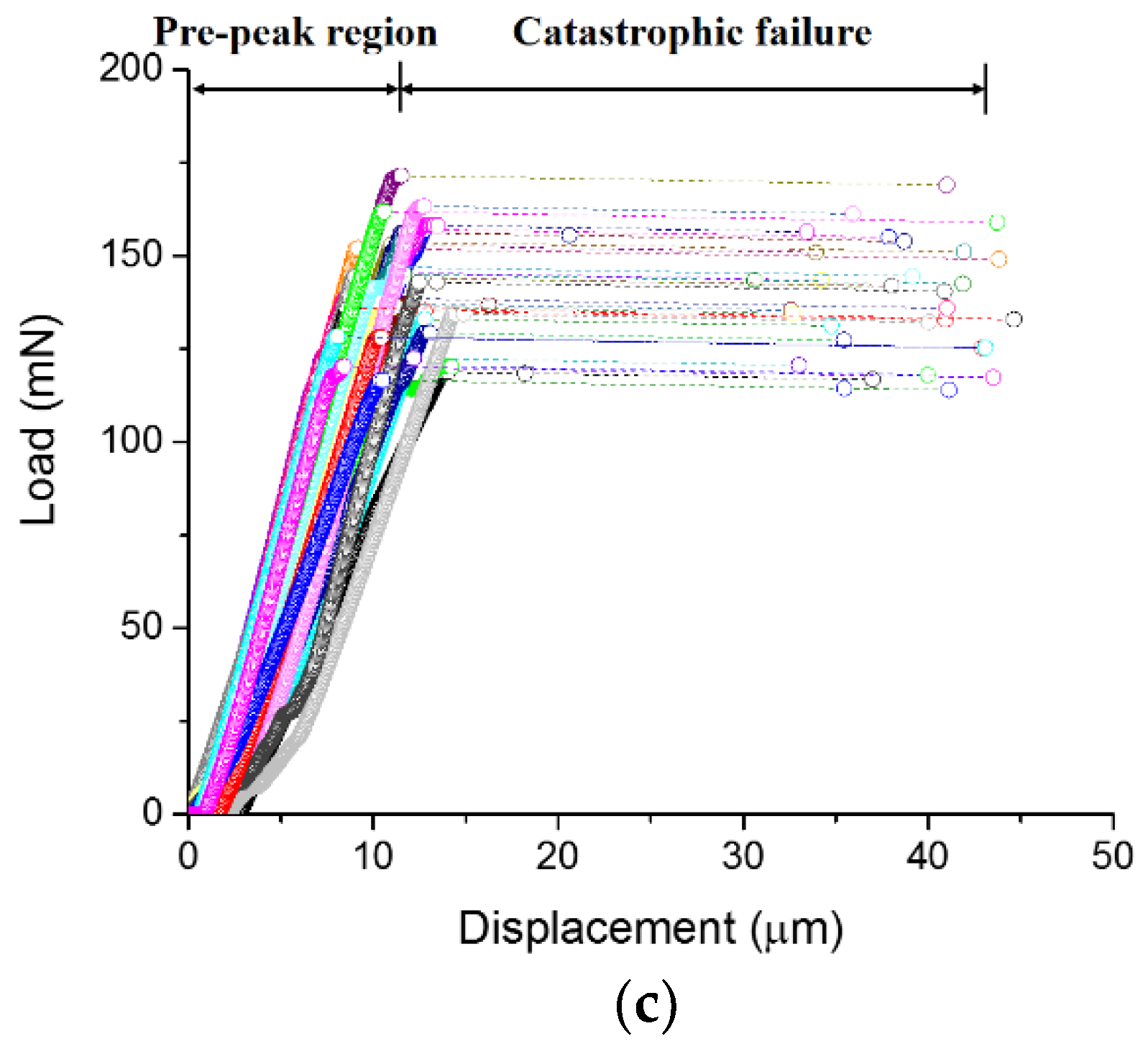
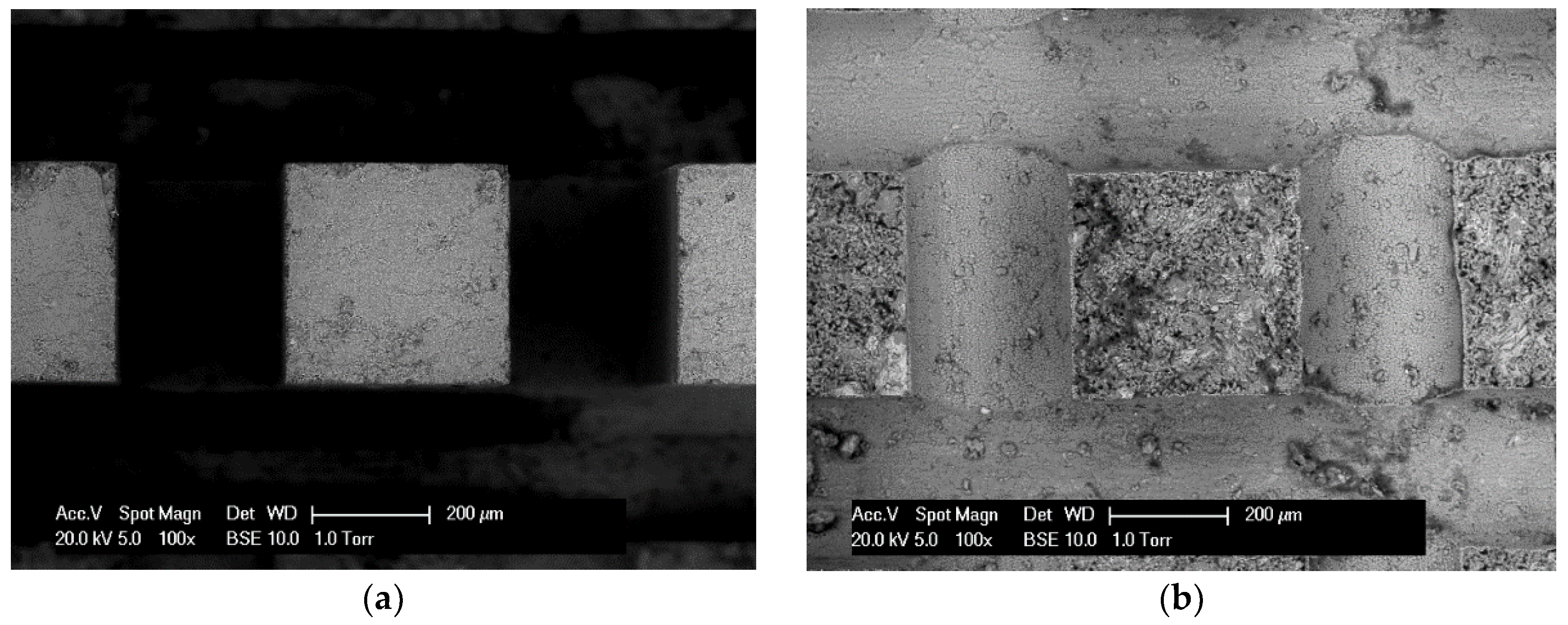
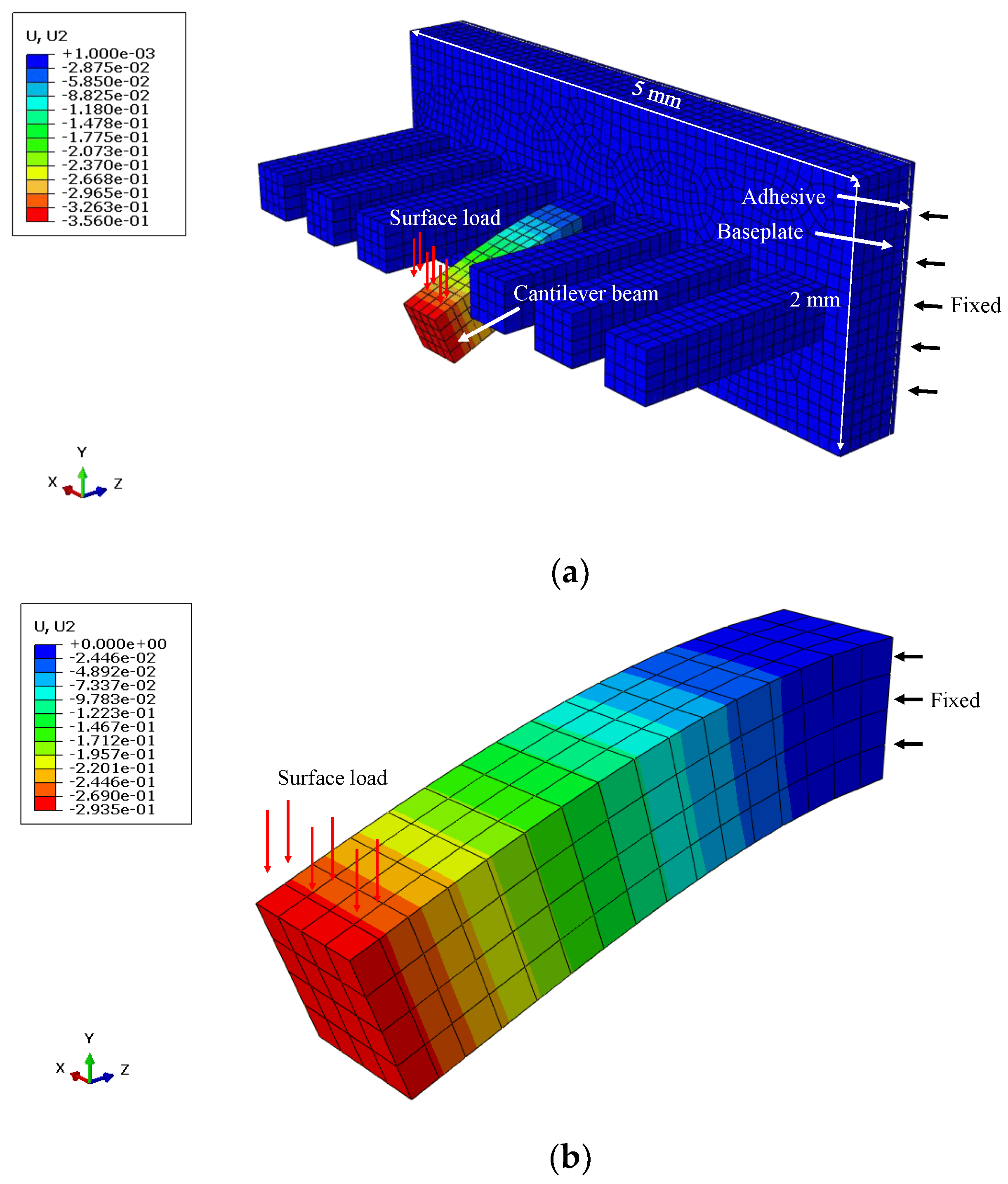

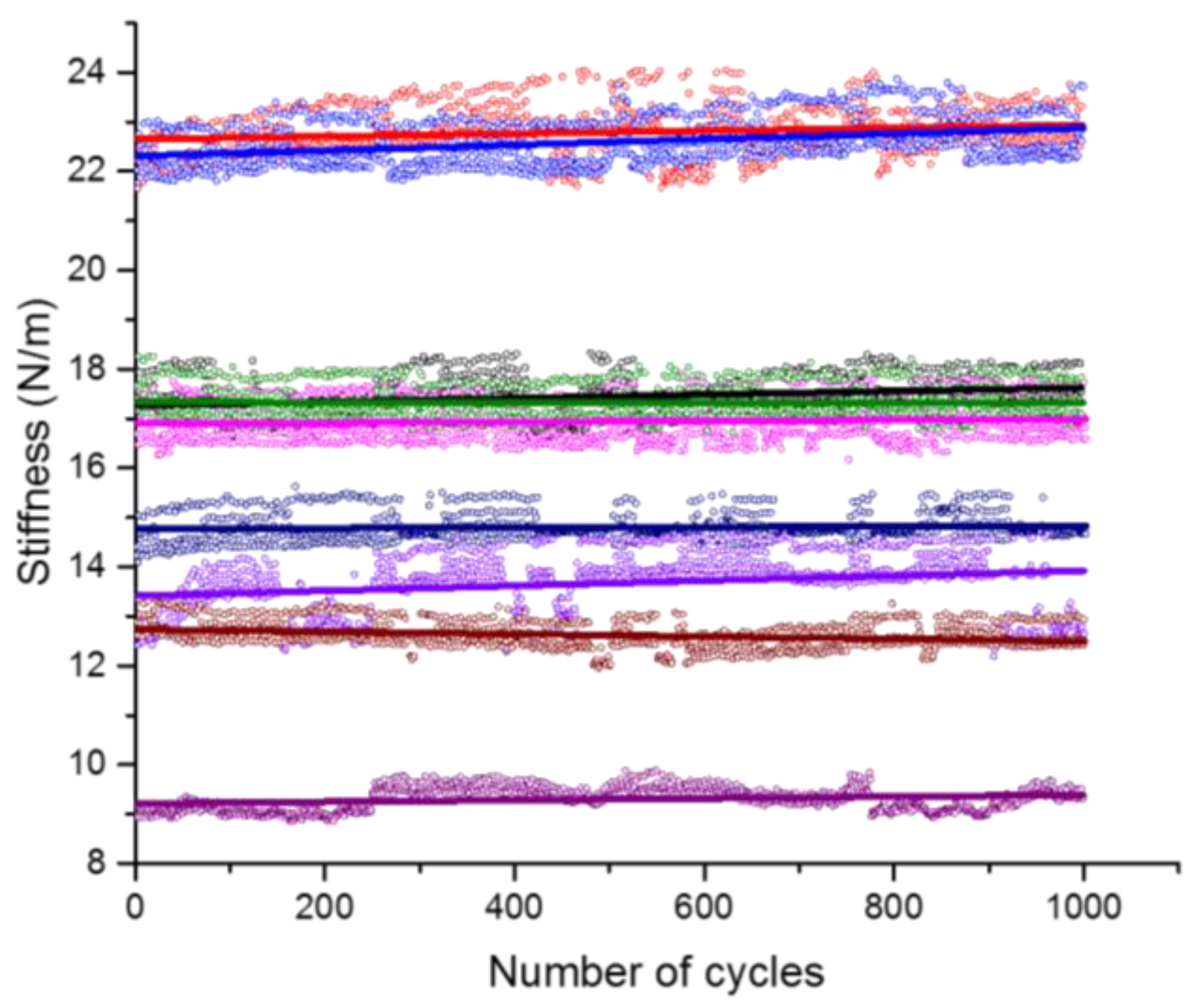
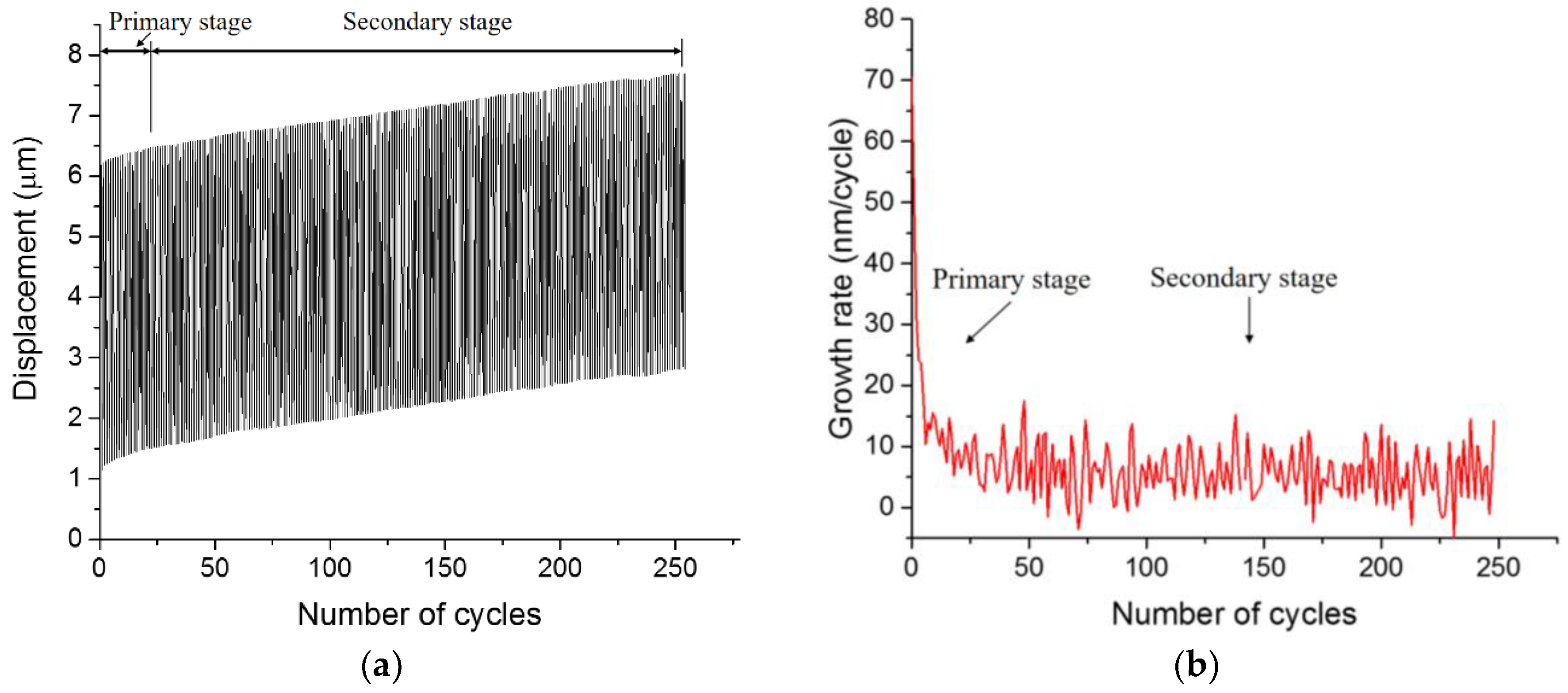
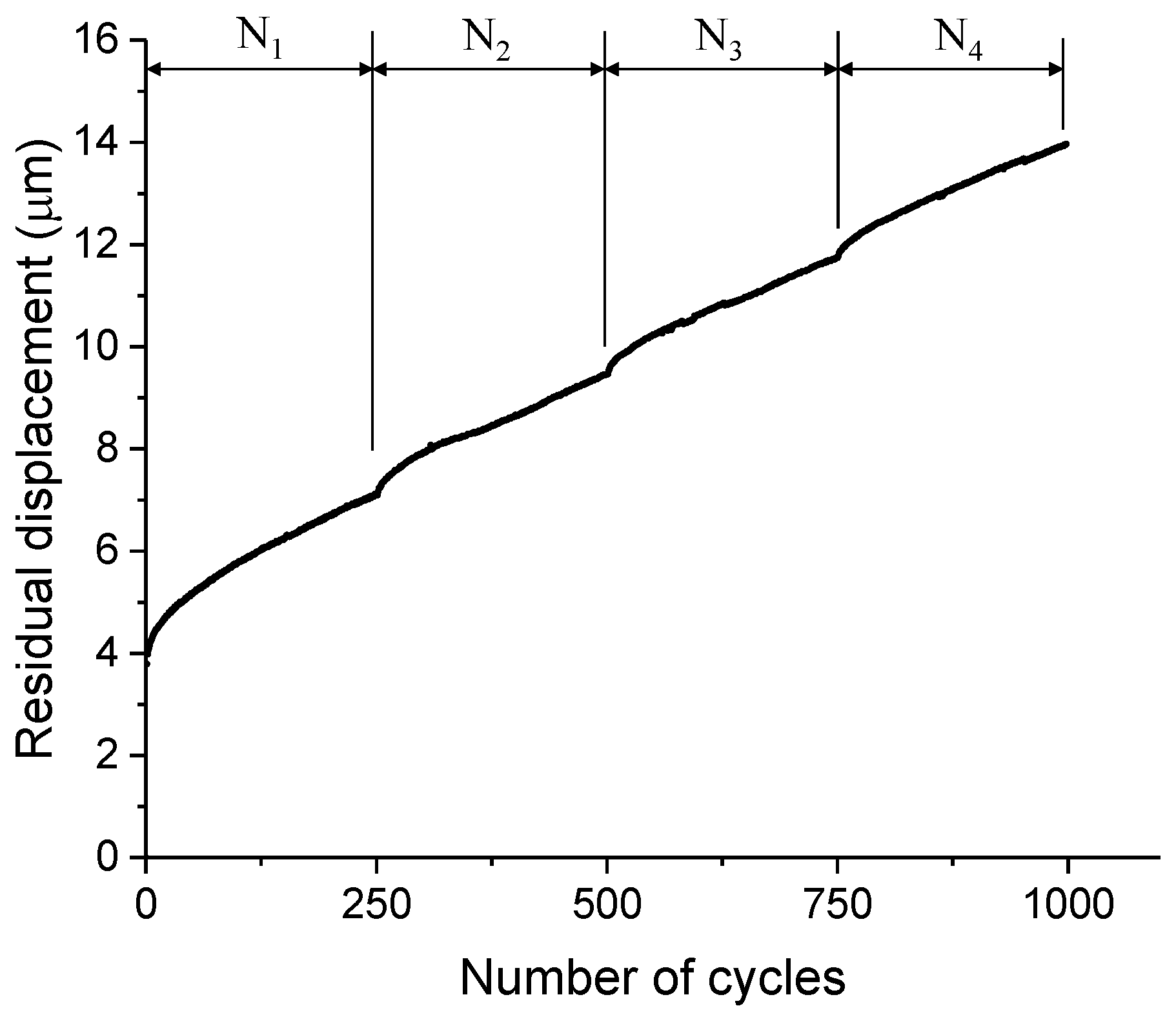
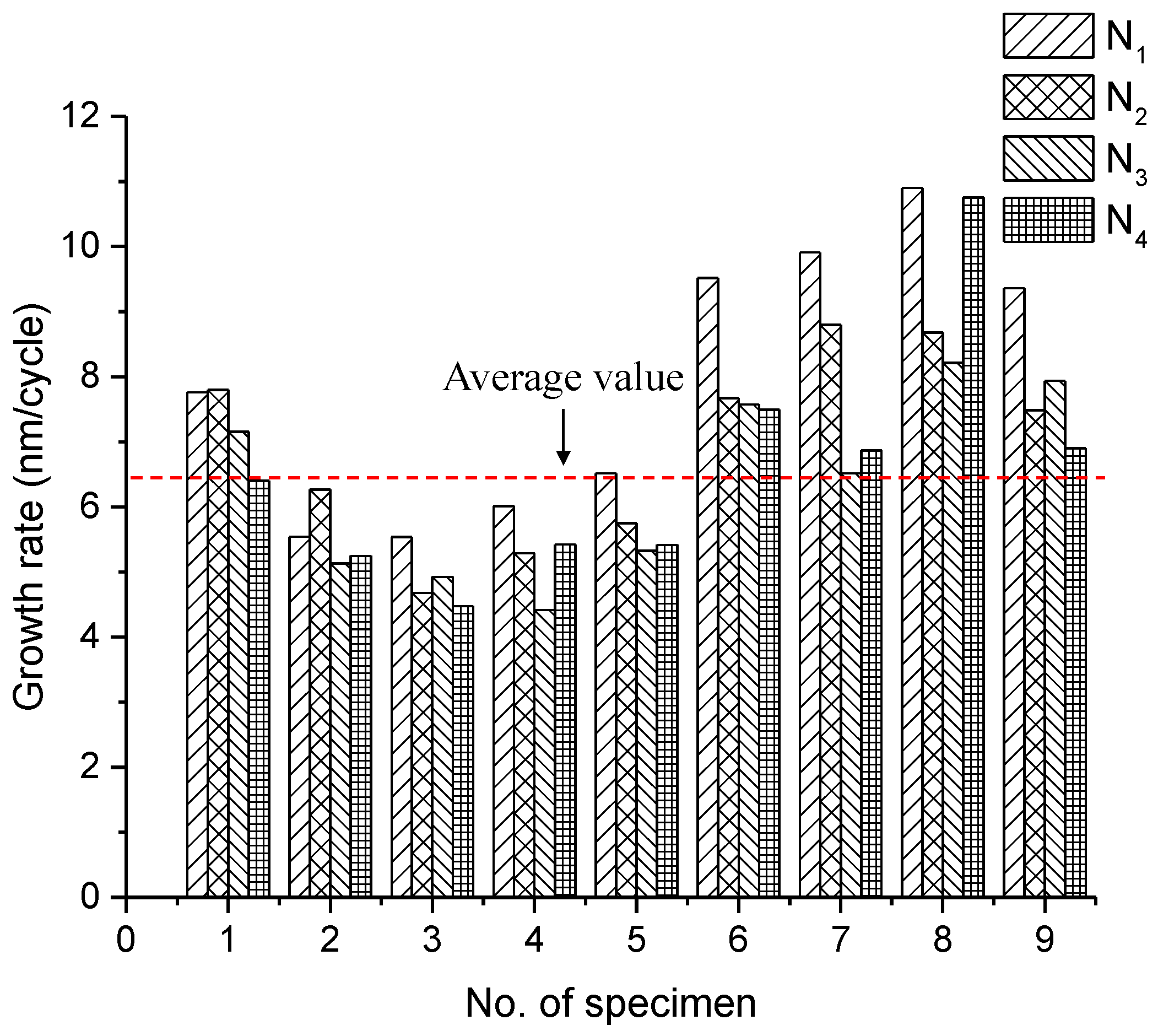
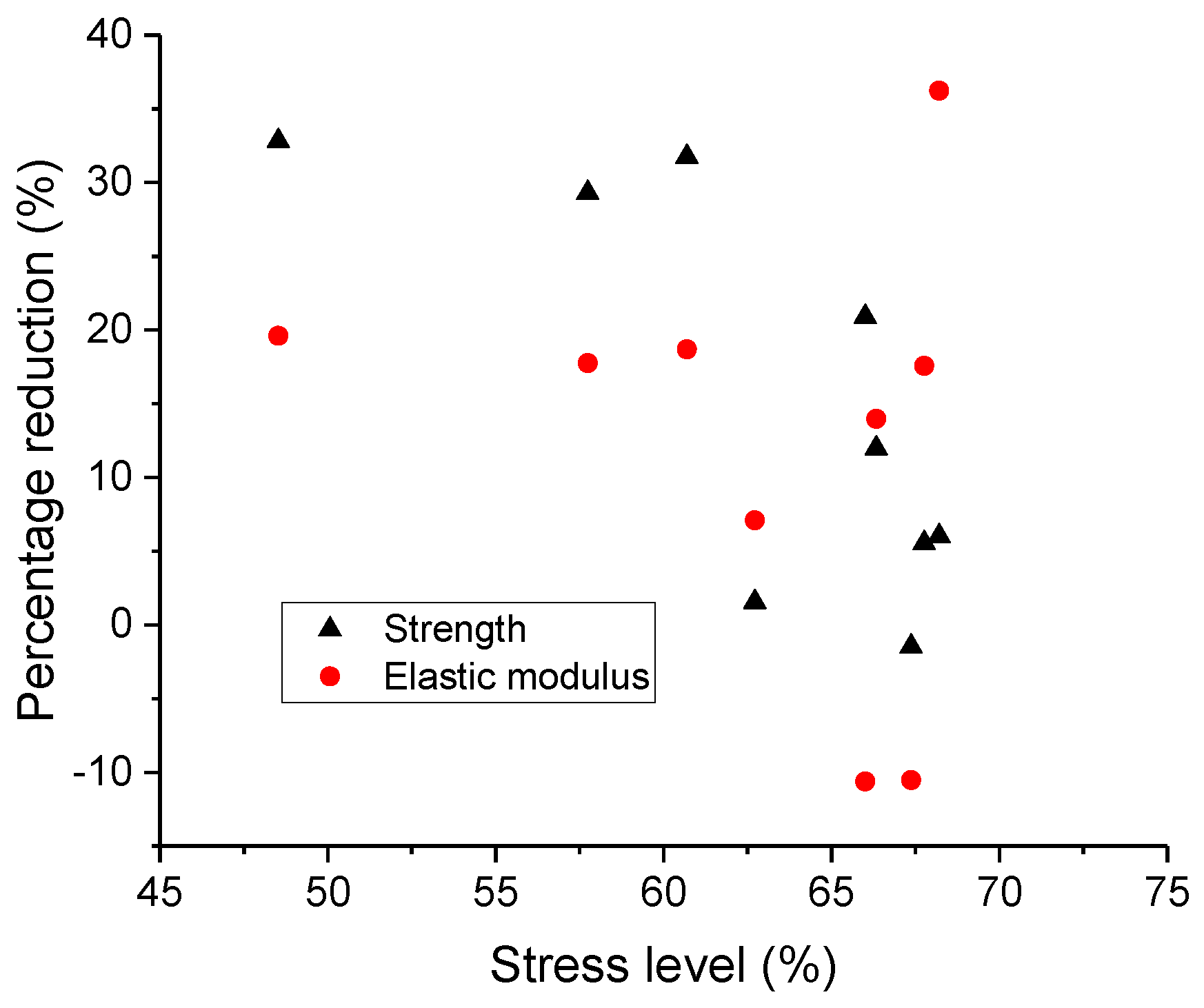
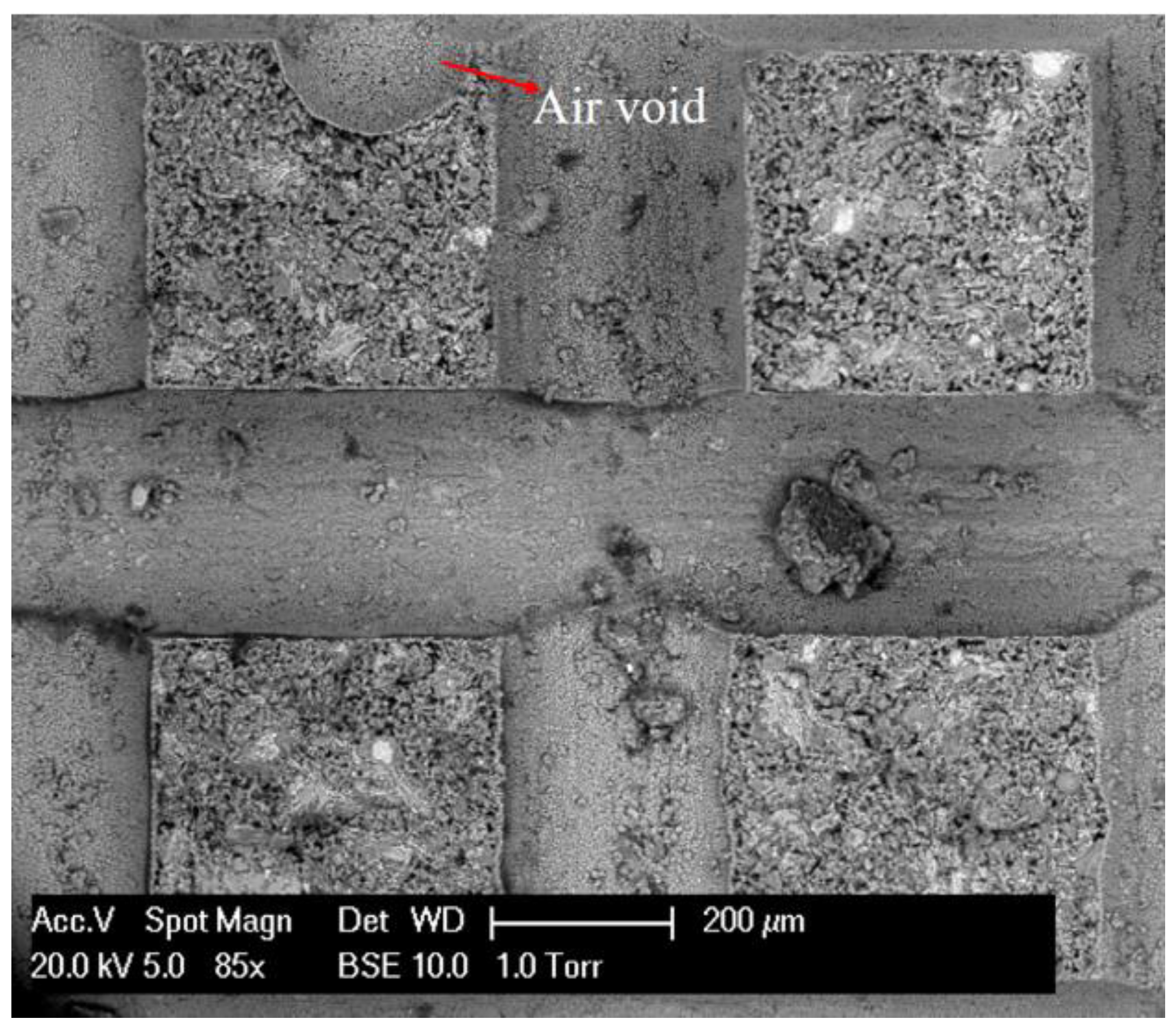
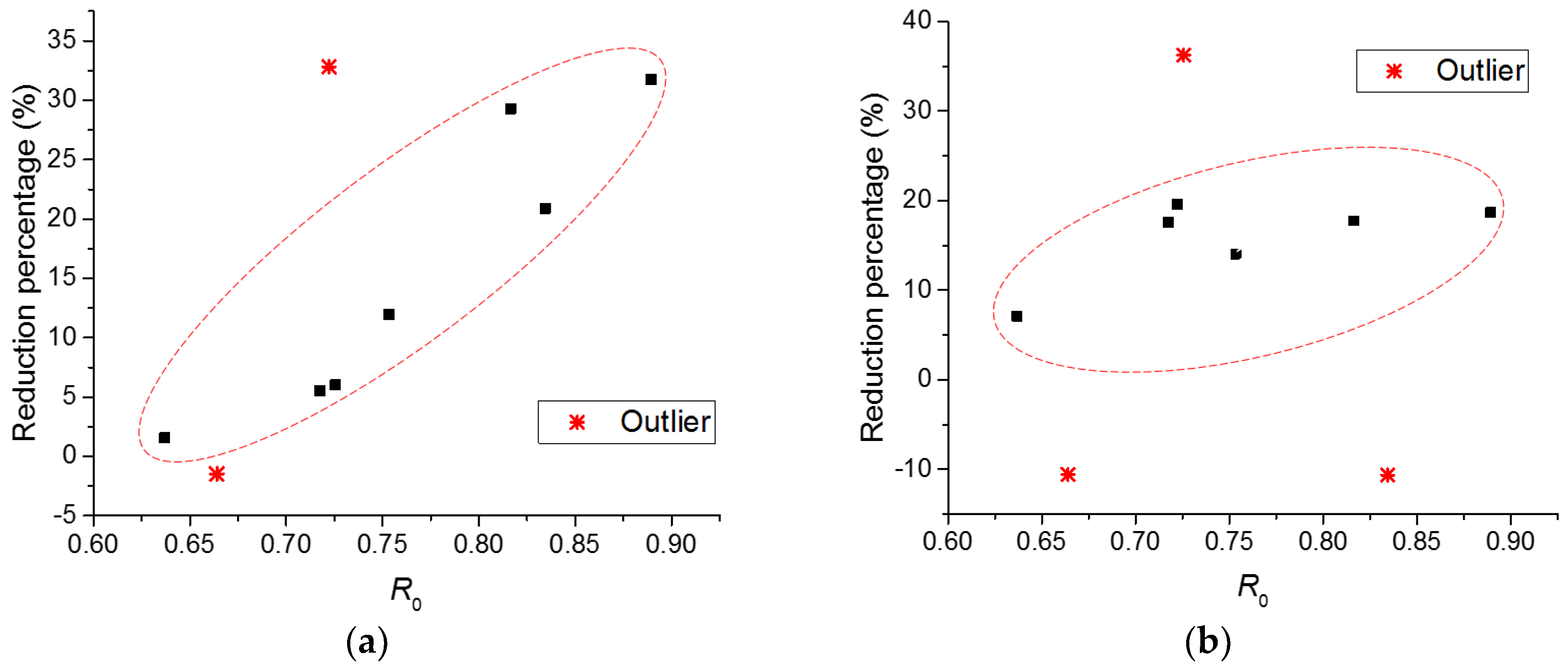
| w/c Ratio | Strength (MPa) | Elastic Modulus (GPa) |
|---|---|---|
| 0.3 | 31.34 ± 3.70 (20.28) 1 | 18.85 ± 3.23 (16.68) 1 |
| 0.4 | 25.27 ± 3.23 (15.31) 1 | 13.97 ± 1.98 (12.79) 1 |
| 0.5 | 22.37 ± 2.31 (11.71) 1 | 10.80 ± 2.44 (9.09) 1 |
© 2018 by the authors. Licensee MDPI, Basel, Switzerland. This article is an open access article distributed under the terms and conditions of the Creative Commons Attribution (CC BY) license (http://creativecommons.org/licenses/by/4.0/).
Share and Cite
Gan, Y.; Zhang, H.; Šavija, B.; Schlangen, E.; Van Breugel, K. Static and Fatigue Tests on Cementitious Cantilever Beams Using Nanoindenter. Micromachines 2018, 9, 630. https://doi.org/10.3390/mi9120630
Gan Y, Zhang H, Šavija B, Schlangen E, Van Breugel K. Static and Fatigue Tests on Cementitious Cantilever Beams Using Nanoindenter. Micromachines. 2018; 9(12):630. https://doi.org/10.3390/mi9120630
Chicago/Turabian StyleGan, Yidong, Hongzhi Zhang, Branko Šavija, Erik Schlangen, and Klaas Van Breugel. 2018. "Static and Fatigue Tests on Cementitious Cantilever Beams Using Nanoindenter" Micromachines 9, no. 12: 630. https://doi.org/10.3390/mi9120630
APA StyleGan, Y., Zhang, H., Šavija, B., Schlangen, E., & Van Breugel, K. (2018). Static and Fatigue Tests on Cementitious Cantilever Beams Using Nanoindenter. Micromachines, 9(12), 630. https://doi.org/10.3390/mi9120630








